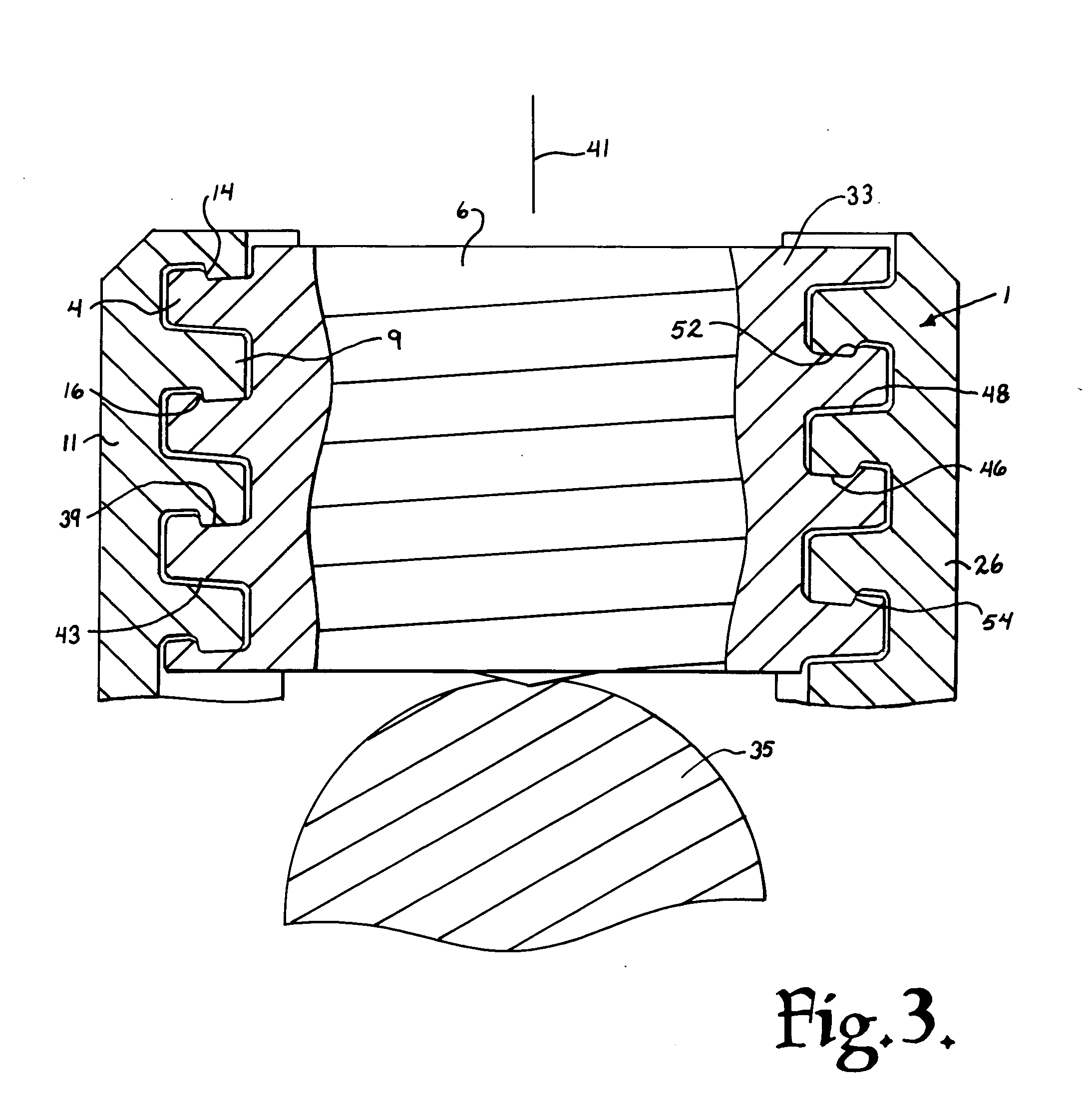Helical guide and advancement flange with radially loaded lip
a technology which is applied in the direction of prosthesis, ligaments, osteosynthesis devices, etc., can solve the problems of implant present special problems, difficult to solve, and the surgeon installing the implant presents a number of problems, so as to facilitate the capture and reduction of spinal fixation rods, improve the and improve the effect of helical guide and advancement flang
- Summary
- Abstract
- Description
- Claims
- Application Information
AI Technical Summary
Benefits of technology
Problems solved by technology
Method used
Image
Examples
Embodiment Construction
[0047] As required, detailed embodiments of the present invention are disclosed herein; however, it is to be understood that the disclosed embodiments are merely exemplary of the invention, which may be embodied in various forms. Therefore, specific structural and functional details disclosed herein are not to be interpreted as limiting, but merely as a basis for the claims and as a representative basis for teaching one skilled in the art to variously employ the present invention in virtually any appropriately detailed structure.
[0048] Referring to the drawings in more detail, the reference numeral 1 generally designates a helical guide and advancement flange structure with radially loaded lips and grooves incorporated in a medical implant 3 and embodying the present invention. The implant 3 can be of a fixed or monoaxial nature or, alternatively, it can have a polyaxial mechanism. The flange structure, or flange form, 1 generally includes an inner flange 4 (FIG. 3) extending helic...
PUM
 Login to View More
Login to View More Abstract
Description
Claims
Application Information
 Login to View More
Login to View More - R&D
- Intellectual Property
- Life Sciences
- Materials
- Tech Scout
- Unparalleled Data Quality
- Higher Quality Content
- 60% Fewer Hallucinations
Browse by: Latest US Patents, China's latest patents, Technical Efficacy Thesaurus, Application Domain, Technology Topic, Popular Technical Reports.
© 2025 PatSnap. All rights reserved.Legal|Privacy policy|Modern Slavery Act Transparency Statement|Sitemap|About US| Contact US: help@patsnap.com



